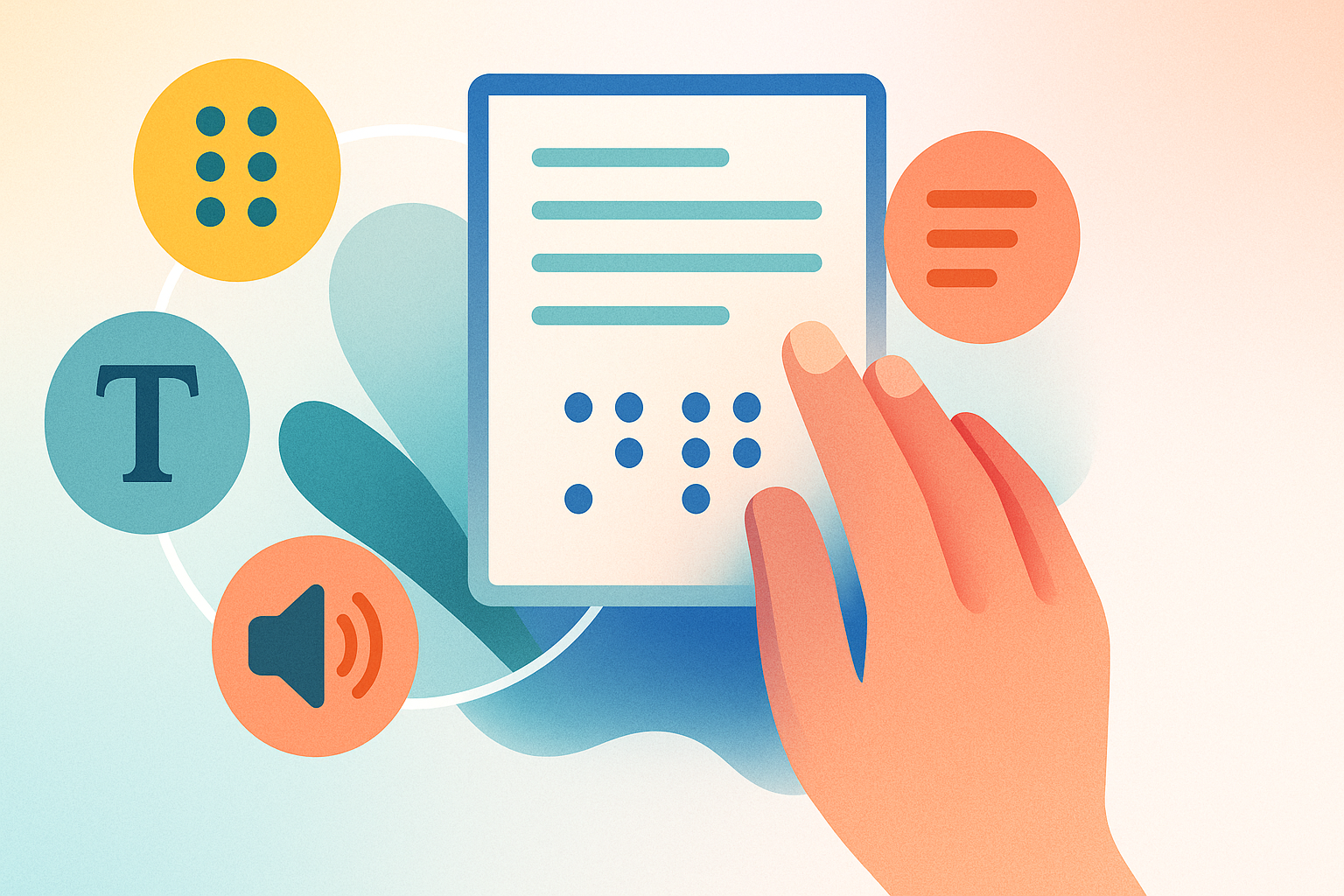


Alternate formats, also known as accessible formats or specialized media, provide information in Braille, large print, audio, or text versions to support individuals with visual, reading, or learning disabilities. These accommodations make printed or digital content easier to access and understand by converting it into formats suited to different needs. Whether for educational materials, workplace documents, or public information, alternate formats promote inclusivity and equal access. Offering materials in Braille benefits those who are blind, while large print supports people with low vision. Audio and text formats cater to diverse learning preferences and reading challenges, making communication more effective and accessible across environments.
Begin by identifying the individual's preferred format and specific needs. Request materials early to allow time for conversion and delivery. Use reliable sources or services specializing in accessible media to produce accurate formats. Regularly update content to match original documents and confirm readability with users. Maintain organized records of requests and formats provided to support ongoing accessibility and compliance.
Disclo streamlines requests, documentation, and tracking for Alternate Formats (Braille, Large Print, Audio and Text), so HR teams and employees spend less time on paperwork and more time working productively.
